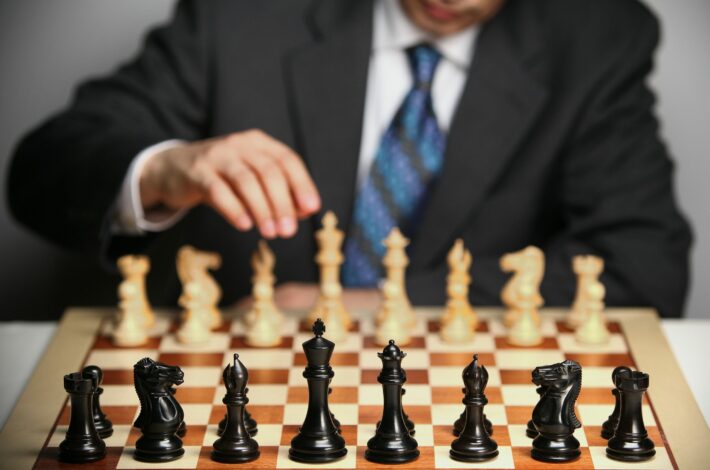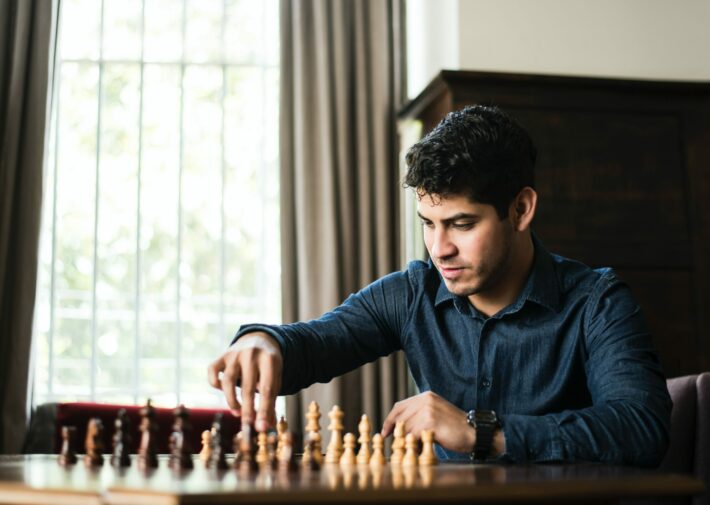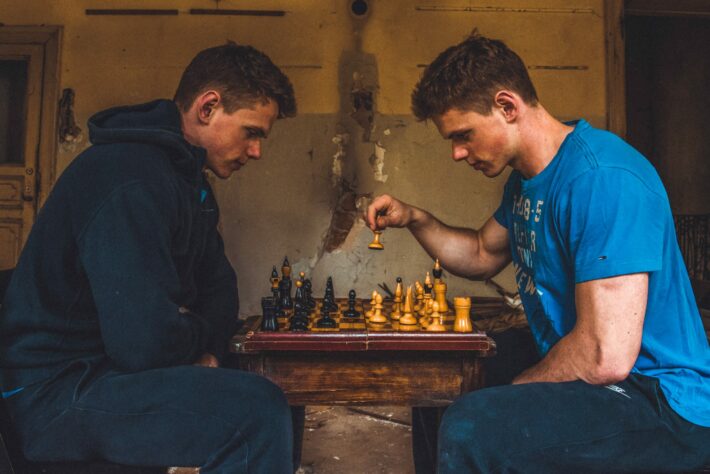Unlock your potential in the world of chess with our comprehensive guide to learning how to play this ancient game. Whether you’re a beginner eager to grasp the basics or an intermediate player seeking to refine your skills, this resource is your key to success on the chessboard.
Discover the fundamental rules and strategies that will lay a strong foundation for your gameplay. From piece movements to tactical maneuvers, we’ll provide step-by-step instructions and expert insights to enhance your understanding. Prepare to delve into the captivating realm of chess, where analytical thinking and strategic planning reign supreme.
What are the essential rules of chess every beginner should know?
Understanding the essential rules of chess is crucial for beginners. Learn about how each piece moves and captures, the concept of checkmate, castling, en passant, and promotion. Familiarize yourself with the objective of the game, the role of the king, and the importance of controlling the center of the board.
Knowing how to properly set up the chessboard and recognizing stalemate situations is also essential. By mastering these foundational rules, you’ll be well-equipped to start playing and enjoying the strategic challenges that chess offers.
How can I improve my chess skills and become a better player?

Improving your chess skills requires a combination of practice, study, and analysis. Dedicate regular time to play games, both online and offline, against opponents of various skill levels. Study chess tactics, endgame principles, and strategic concepts through books, online resources, and tutorials.
Analyze your games to identify weaknesses and areas for improvement. Solving chess puzzles can enhance your calculation abilities. Seeking guidance from experienced players or joining a chess club can provide valuable insights and opportunities for growth. Remember, consistent effort and a thirst for knowledge are key to becoming a better chess player.
What are some common chess strategies and tactics I should learn?
Chess strategies and tactics play a vital role in outmaneuvering opponents. Familiarize yourself with concepts like pawn structure, piece development, control of key squares, and attacking or defending specific areas of the board. Study tactical themes such as forks, pins, and skewers, and discovered attacks to gain a tactical edge.
Understanding positional play, evaluating the relative strengths and weaknesses of each piece, and planning is also essential. Learning strategic principles like piece coordination, prophylaxis, and exploiting imbalances will greatly enhance your overall gameplay.
What are the different chess pieces and their movements?
Chess consists of six different pieces, each with its unique movement pattern. The king moves one square in any direction. Queens can move in any direction along ranks, files, and diagonals. Rooks move horizontally or vertically across the board.
Bishops can move diagonally across the board. Knights move in an L-shape, making two squares in one direction and then turning 90 degrees for one more square. Pawns move forward one square, but on their initial move, they have the option to move two squares forward. Understanding these movements is fundamental to playing chess effectively.
How do I set up the chessboard correctly?
Setting up the chessboard correctly is essential before starting a game. Begin by placing the board so that a white square is in each player’s bottom right corner. The bottom row should be filled with white pieces, including rooks in the corners, knights next to them, followed by bishops.
Place the queen on the remaining white square and the king next to it. The second row should be filled with pawns. Repeat the same arrangement for the black pieces mirrored across the board. Double-check the setup to ensure accuracy and alignment.
What is the best way to approach the opening moves in chess?
The opening phase in chess sets the stage for the rest of the game. Focus on controlling the center of the board by developing your pieces, particularly knights and bishops. Aim to castle early to secure the king’s safety. Familiarize yourself with popular opening principles such as rapid development, pawn structure considerations, and piece coordination.
Explore different opening variations and study their underlying ideas. Avoid moving the same piece multiple times in the opening and strive to maintain a harmonious position while keeping an eye on potential tactical opportunities.
How can I effectively defend my pieces and protect my position in chess?
Effective defense and position protection are essential in chess. Prioritize piece activity and coordination, ensuring that each piece defends others and contributes to the overall position. Watch out for tactical threats and calculate potential captures or attacks. Prophylactic moves, preventing your opponent’s plans, can be valuable.
Maintain a solid pawn structure to fortify your position and reduce weaknesses. Be vigilant and consider potential weaknesses in your position, including unprotected pieces, loose pawns, or open lines. By mastering defensive strategies, you can ward off threats and maintain a resilient position.
What are some recommended resources or books for learning chess?
When it comes to learning chess, several resources and books can greatly aid your development. Some highly recommended options include “Bobby Fischer Teaches Chess” by Bobby Fischer, “My System” by Aron Nimzowitsch, “The Complete Idiot’s Guide to Chess” by Patrick Wolff, “Silman’s Complete Endgame Course” by Jeremy Silman, and “Logical Chess: Move By Move” by Irving Chernev.
Online platforms like chess.com, lichess.org, and chess24.com also provide valuable learning materials, puzzles, and opportunities to play against opponents of varying skill levels.
This table provides valuable information about recommended resources and books for learning chess.
| Resource/Book | Description | Key Features |
|---|---|---|
| “Bobby Fischer Teaches Chess” by Bobby Fischer | A classic chess book that provides a comprehensive introduction to the game. | – Interactive lessons and quizzes
– Teaches basic tactics and strategies – Suitable for beginners |
| “My System” by Aron Nimzowitsch | A strategic masterpiece that delves into positional play and understanding pawn structures. | – Explores key positional concepts
– Examines the importance of pawn play – Suitable for intermediate to advanced players |
| “The Complete Idiot’s Guide to Chess” by Patrick Wolff | A beginner-friendly guide that covers the fundamentals of chess. | – Covers basic rules and tactics
– Provides practical advice for improvement – Suitable for beginners |
| “Silman’s Complete Endgame Course” by Jeremy Silman | An in-depth guide focusing on endgame strategies and techniques. | – Covers essential endgame concepts
– Provides practical examples and exercises – Suitable for all skill levels |
| “Logical Chess: Move By Move” by Irving Chernev | A classic book that analyzes and explains the thought process behind each move. | – Breaks down moves step by step
– Emphasizes understanding the reasoning behind moves – Suitable for beginners to intermediate players |
What are the most common mistakes to avoid as a beginner in chess?
As a beginner in chess, it’s crucial to be aware of common mistakes and pitfalls. Avoid neglecting piece development or leaving pieces undefended, as this can lead to tactical vulnerabilities. Don’t overlook the importance of king safety and timely castling.
Refrain from making hasty moves without considering the consequences or the position’s demands. Resist the temptation to focus solely on attacking and neglecting defensive considerations. Additionally, avoid excessive pawn moves in the opening, as they can weaken your position. By being mindful of these mistakes, you can strengthen your gameplay from the outset.
How can I practice and play chess online against other players?

Playing chess online is a convenient and effective way to practice and compete against players worldwide. Join popular chess platforms like chess.com, lichess.org, or chess24.com, where you can create an account and start playing against opponents of varying skill levels.
These platforms offer different time controls, allowing you to choose games that suit your preferences. You can also participate in tournaments, solve puzzles, and analyze your games using the platform’s built-in tools. Engaging in online chess communities and joining forums or groups dedicated to chess can provide additional opportunities for practice and learning.
What are the different chess notation systems used for recording moves?
Chess notation systems allow players to record and communicate their moves effectively. The two most common systems are Algebraic Notation (AN) and Descriptive Notation (DN). Algebraic Notation uses letters to represent pieces and numbers to indicate the squares they move to. It also includes symbols for capturing, casting, and pawn promotion.
Descriptive Notation is an older system that describes moves based on the piece’s starting position and the square it moves to. While AN is widely used today, DN is still found in older chess literature. Familiarize yourself with both systems to understand historical texts and modern resources.
How do I recognize and capitalize on tactical opportunities in chess?
Recognizing and capitalizing on tactical opportunities can significantly impact your chess game. Sharpen your tactical vision by studying common tactical motifs such as forks, pins, skewers, and discovered attacks. Analyze the position to identify potential weaknesses in your opponent’s camp. Look for unprotected pieces or pawns, overloaded defenders, or vulnerable king positions.
Regularly solve chess puzzles and tactical exercises to improve your calculation skills and pattern recognition. Practice visualization and calculation techniques to accurately evaluate tactical variations. By honing these skills, you’ll be able to seize tactical opportunities and gain an advantage in your games.
Are there any specific strategies for winning in the endgame phase of chess?
The endgame phase requires a different set of strategies to secure victory. Centralize your king, activate your remaining pieces, and focus on promoting pawns if possible. Understanding basic endgame principles, such as king and pawn endgames or rook endgames, can be beneficial. Learn important concepts like opposition, triangulation, and zugzwang.
Prioritize active piece play, while avoiding unnecessary exchanges that may simplify the position. Study endgame books or online resources to familiarize yourself with common endgame techniques and strategies. By mastering the endgame phase, you can convert small advantages into decisive victories.
How can I analyze and learn from my past chess games?
Analyzing your past chess games is a valuable learning tool for improvement. Use a chess engine or computer program to analyze the game’s critical positions and evaluate alternative moves. Identify any mistakes, missed opportunities, or tactical oversights. Consider the reasoning behind each move and assess the positional consequences.
Take note of recurring patterns or strategic themes that emerged during the game. Share your games with stronger players or join a chess community where you can receive feedback and insights. By critically analyzing your games, you’ll gain a deeper understanding of your strengths, weaknesses, and areas for improvement.
What are some useful tips for developing a strong chess opening repertoire?

Developing a strong chess opening repertoire involves selecting specific openings that suit your style and offer strategic flexibility. Study the main ideas, typical pawn structures, and plans associated with each opening. Focus on understanding the key concepts and principles rather than memorizing moves.
Start with a few openings and gradually expand your repertoire over time. Analyze master games and annotated variations to gain insights into the opening’s strategic nuances. Experiment with different variations and seek guidance from chess resources or experienced players to refine and adapt your repertoire. By building a solid opening repertoire, you’ll have a reliable foundation for the middle game and increase your chances of success.
Ultimately
Learning how to play chess is an enriching journey that opens doors to strategic thinking and mental agility. By grasping the essential rules, understanding common strategies and tactics, and exploring valuable resources, you can embark on a path toward mastery.
Whether you’re a beginner seeking to lay a solid foundation or an intermediate player looking to refine your skills, the world of chess offers endless growth opportunities. By practicing, analyzing your games, and continuously expanding your knowledge, you can unlock your true potential on the chessboard. Embrace the challenges, embrace the rewards, and embrace the captivating realm of chess.




